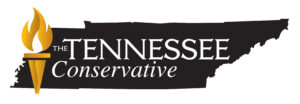How Tennessee Schools Are Spending Federal Funds & Why There Is Opposition To Rejecting Federal Money
Image Credit: Memphis Shelby County Schools
The Tennessee Conservative [By Adelia Kirchner] –
Earlier this week, Speaker of the House Cameron Sexton (R-Crossville) and Lt. Governor Randy McNally (R-Oak Ridge), announced the creation of a “task force” for the purposes of studying what impact the rejection of federal funding might have on Tennessee’s education system.
Keep in mind, federal funding often comes with contingencies. For example, when the state received money for Covid-19, it was only able to accept the money if certain policies or mandates were carried out wherever that funding was allocated.
Democrat lawmakers are not in favor of this “task force” and neither are many of Tennessee’s school districts.
Founder of The Tennessee Liberty Network, AJ DePriest, took to the group’s social media to share her research on the subject matter, shedding some light on how school districts are actually using their federal funding.
“Ready to follow the money?” she asked, reminding readers that “loyalty” is “what a quarter billion [plus] dollars buys you.”
According to DePriest, she pulled the Elementary and Secondary School Emergency Relief (ESSER) Use of Funds Plan for Shelby County and found that the county’s total ESSER funding is listed as $806,283,325 for a population of 108,423 students, which totals out to $7,436.46 per student.
“Shelby County receives the most [federal] blood money than any other district in Tennessee,” she wrote. “However, ALL Tennessee’s school districts take big fed money, and every district’s Use of Funds Plan looks similar to Shelby County regarding how they spend their handout.”
It is worth noting, however, that rural counties do receive far less federal funding. For example, Humphreys County’s ESSER funding is listed as $7,851,452 for a population of 2,800 students, which totals out to $2,804.09 per student.
Tennesseans can look at their local district’s Use of Funds Plan for themselves by clicking here.
According to DePriest’s research into Shelby County, an Epidemiology and Laboratory Capacity for Prevention and Control of Emerging Infectious Diseases (ELC) Allocation of nearly $30 million is also listed. This is CDC grant money for Covid-19 testing.
In order to use ESSER and ELC funds, school districts must relate each planned expense back to the origin of the funds, Covid-19.
Therefore, it can be assumed that each expense listed throughout the remainder of this article is classified by the district as necessary “due to Covid-19” whether or not that classification is accurate.
Shelby County’s Use of Funds Plan specifies intent to use some of the ESSER funding to support Social Emotional Learning (SEL) and employ an array of social workers, counselors, and other supports.
The plan puts a heavy emphasis on SEL curriculum, a summer programming commitment to SEL, a Dean of SEL, an SEL coordinator, an SEL instructor, and SEL training for students and staff.
Over $32 million of the district’s funding is dedicated to Mental Health and over $220 million is dedicated to Facilities.
Other planned expenses include a dedicated nurse for Covid-19 treatment and Medicare involvement, efforts to keep students in public schools, school-based health clinics for general and reproductive health, as well as teletherapy payments and SEL hotline usage.
The last three, of course, prompt an additional discussion on parental rights and whether parents will be informed of how their student uses these services.
Additionally, almost $12 million is devoted to mental health and creating safe spaces to “improve the culture and climate of schools.” This is paired with an additional $225,000 dedicated to mental health support, and $20 million for mental health care facilities alongside more SEL staff and resources.
Yet another $5.2 million is directed towards teacher recruitment and retention, focused on training for SEL and “trauma-based” learning.
Shelby County’s plan also lists around $202 million for improving facilities, which DePriest stated “sounds good at the 30,000-foot view.”
“But if your kids are in Shelby County schools (like all TN schools), you must find out WHAT districts are using to meet the ARP [American Rescue Plan] Act requirements regarding ventilation improvements,” DePriest continued.
On final note, the plan states that if the infamous “Infrastructure Bill is passed, and additional opportunities to fund initiatives become available” Shelby County schools would receive an additional $179 million dollars. $64 million of which would be allocated to even more mental health services.

About the Author: Adelia Kirchner is a Tennessee resident and reporter for the Tennessee Conservative. Currently the host of Subtle Rampage Podcast, she has also worked for the South Dakota State Legislature and interned for Senator Bill Hagerty’s Office in Nashville, Tennessee. You can reach Adelia at adelia@tennesseeconservativenews.com.







Keep The Federal Government out of our schools. They have dropped money with always with if I could would you. Until we stand on our own two feet, we will never be able run the schools to the children’s advantage.
This situation is much like the budget mess. Unless and until voters take a hard line stand by voting out every pig in the trough both federal and local, nothing will change. To take that stand, there’s going to be pain, a lot of it. It’s like having joint replacement surgery. It hurts like hell for awhile but your far better off when you come out the other side. Federal money is blood money. It takes away any options Tennesseans might have had to control the schools.